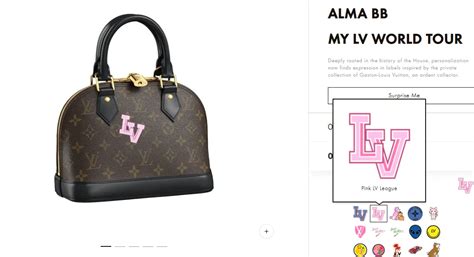louis vuitton e commerce strategy | louis vuitton fashion strategy louis vuitton e commerce strategy Louis Vuitton’s digital transformation consists of an overall strengthening of its user experience. In 2017, Louis Vuitton parent company LVMH launched its multi-brand fashion .
ICD-10 code I50.3 for Diastolic (congestive) heart failure is a medical classification as listed by WHO under the range - Diseases of the circulatory system . Official Long Descriptor. Diastolic (congestive) heart failure. Diastolic left ventricular heart failure. Heart failure with normal ejection fraction.
0 · louis vuitton personalization strategy
1 · louis vuitton marketing campaigns
2 · louis vuitton marketing
3 · louis vuitton fashion strategy
4 · louis vuitton exclusive marketing
5 · louis vuitton collaboration strategy
6 · louis vuitton advertising
7 · advertising strategy louis vuitton
October 8, 2020 - 6:12 pm. Don't miss the big stories. Like us on Facebook. Monica Jackson says, “I’m going to do what I do.” Which is, tell stories and connect with the Las .
louis vuitton personalization strategy
Louis Vuitton eCommerce Strategy: Key Insights. Online Sales Lead: At the forefront of luxury brands, Louis Vuitton reached the highest online net sales in 2022, totaling US.6 billion through online platforms. If you’d look at Louis Vuitton’s brand and visual components now—from its user experience (UX) and user interface (UI) to its eCommerce store functionality—you’d see the . The brand has seamlessly integrated e-commerce into its digital strategy, allowing consumers to browse, select, and purchase Louis Vuitton products online. The online shopping experience mirrors the exclusivity of the .
Marketing Strategies Aligned with Target Audience: Louis Vuitton's marketing strategies are meticulously crafted to resonate with its target demographic. This section .
Louis Vuitton’s branding efforts focus on showcasing the brand’s heritage, attention to detail, and commitment to craftsmanship. By emphasizing these aspects, Louis Vuitton has .
Louis Vuitton’s digital transformation consists of an overall strengthening of its user experience. In 2017, Louis Vuitton parent company LVMH launched its multi-brand fashion .Louis Vuitton’s approach to online retail offers valuable lessons on how to effectively sell high-end products through exceptional website design and strategic digital marketing. The Essence of . PARIS — Long averse to selling its luxury products online, LVMH Moët Hennessy Louis Vuitton is projecting a bigger role for its e-commerce platforms, including multibrand site .
Parent company LVMH recently announced a new chief position focusing on e-commerce, a sign that the luxury giant wants to shake things up.
And, over the next few years, the luxury industry is set for significant e-commerce growth, with digital sales expected to more than triple by 2025, reaching €74 billion ( . Louis Vuitton eCommerce Strategy: Key Insights. Online Sales Lead: At the forefront of luxury brands, Louis Vuitton reached the highest online net sales in 2022, totaling US.6 billion through online platforms.
If you’d look at Louis Vuitton’s brand and visual components now—from its user experience (UX) and user interface (UI) to its eCommerce store functionality—you’d see the LVMH subsidiary has come a long way. The brand has seamlessly integrated e-commerce into its digital strategy, allowing consumers to browse, select, and purchase Louis Vuitton products online. The online shopping experience mirrors the exclusivity of the in-store experience, with features such as virtual try-ons and personalized recommendations enhancing the digital customer journey. Marketing Strategies Aligned with Target Audience: Louis Vuitton's marketing strategies are meticulously crafted to resonate with its target demographic. This section dissects the brand's campaigns and product offerings tailored to the 25–54 age group, showcasing a nuanced understanding of consumer aspirations and preferences. Louis Vuitton’s branding efforts focus on showcasing the brand’s heritage, attention to detail, and commitment to craftsmanship. By emphasizing these aspects, Louis Vuitton has positioned itself as a leader in the fashion industry, commanding premium prices and standing out from its competitors.
Louis Vuitton’s digital transformation consists of an overall strengthening of its user experience. In 2017, Louis Vuitton parent company LVMH launched its multi-brand fashion eCommerce site, 24 Sèvres, to fortify its digital strategy and bring itself up to speed with the times. Louis Vuitton’s approach to online retail offers valuable lessons on how to effectively sell high-end products through exceptional website design and strategic digital marketing. The Essence of Luxury: site Design

louis vuitton marketing campaigns
PARIS — Long averse to selling its luxury products online, LVMH Moët Hennessy Louis Vuitton is projecting a bigger role for its e-commerce platforms, including multibrand site 24S, as the. Parent company LVMH recently announced a new chief position focusing on e-commerce, a sign that the luxury giant wants to shake things up. And, over the next few years, the luxury industry is set for significant e-commerce growth, with digital sales expected to more than triple by 2025, reaching €74 billion ( billion), according to global consultancy McKinsey. While its track record online has been uneven, LVMH has finally made digital a top priority. Louis Vuitton eCommerce Strategy: Key Insights. Online Sales Lead: At the forefront of luxury brands, Louis Vuitton reached the highest online net sales in 2022, totaling US.6 billion through online platforms.
If you’d look at Louis Vuitton’s brand and visual components now—from its user experience (UX) and user interface (UI) to its eCommerce store functionality—you’d see the LVMH subsidiary has come a long way.
The brand has seamlessly integrated e-commerce into its digital strategy, allowing consumers to browse, select, and purchase Louis Vuitton products online. The online shopping experience mirrors the exclusivity of the in-store experience, with features such as virtual try-ons and personalized recommendations enhancing the digital customer journey. Marketing Strategies Aligned with Target Audience: Louis Vuitton's marketing strategies are meticulously crafted to resonate with its target demographic. This section dissects the brand's campaigns and product offerings tailored to the 25–54 age group, showcasing a nuanced understanding of consumer aspirations and preferences. Louis Vuitton’s branding efforts focus on showcasing the brand’s heritage, attention to detail, and commitment to craftsmanship. By emphasizing these aspects, Louis Vuitton has positioned itself as a leader in the fashion industry, commanding premium prices and standing out from its competitors. Louis Vuitton’s digital transformation consists of an overall strengthening of its user experience. In 2017, Louis Vuitton parent company LVMH launched its multi-brand fashion eCommerce site, 24 Sèvres, to fortify its digital strategy and bring itself up to speed with the times.
Louis Vuitton’s approach to online retail offers valuable lessons on how to effectively sell high-end products through exceptional website design and strategic digital marketing. The Essence of Luxury: site Design PARIS — Long averse to selling its luxury products online, LVMH Moët Hennessy Louis Vuitton is projecting a bigger role for its e-commerce platforms, including multibrand site 24S, as the.
Parent company LVMH recently announced a new chief position focusing on e-commerce, a sign that the luxury giant wants to shake things up.

Jau pavisam drīz :) http://golfacademy.lv/lv/jaunumi/231-treninlaukums-pavasari.html
louis vuitton e commerce strategy|louis vuitton fashion strategy

























